Exploratorium’s Total Solar Eclipse
Not too long ago, we had the opportunity to sit down with Rob Rothfarb, Project Director of the Online Media Group at the Exploratorium in San Francisco. Rob shared with us the Exploratorium’s educational mission, and how through both a multi-pronged content awareness strategy and multiple layers of video technology and testing, that vision became a reality. Across the world and devices (which included an app complete with live video stream), a whole new audience was exposed to a rare total solar eclipse.
Read our interview below for inspiration for your next event.
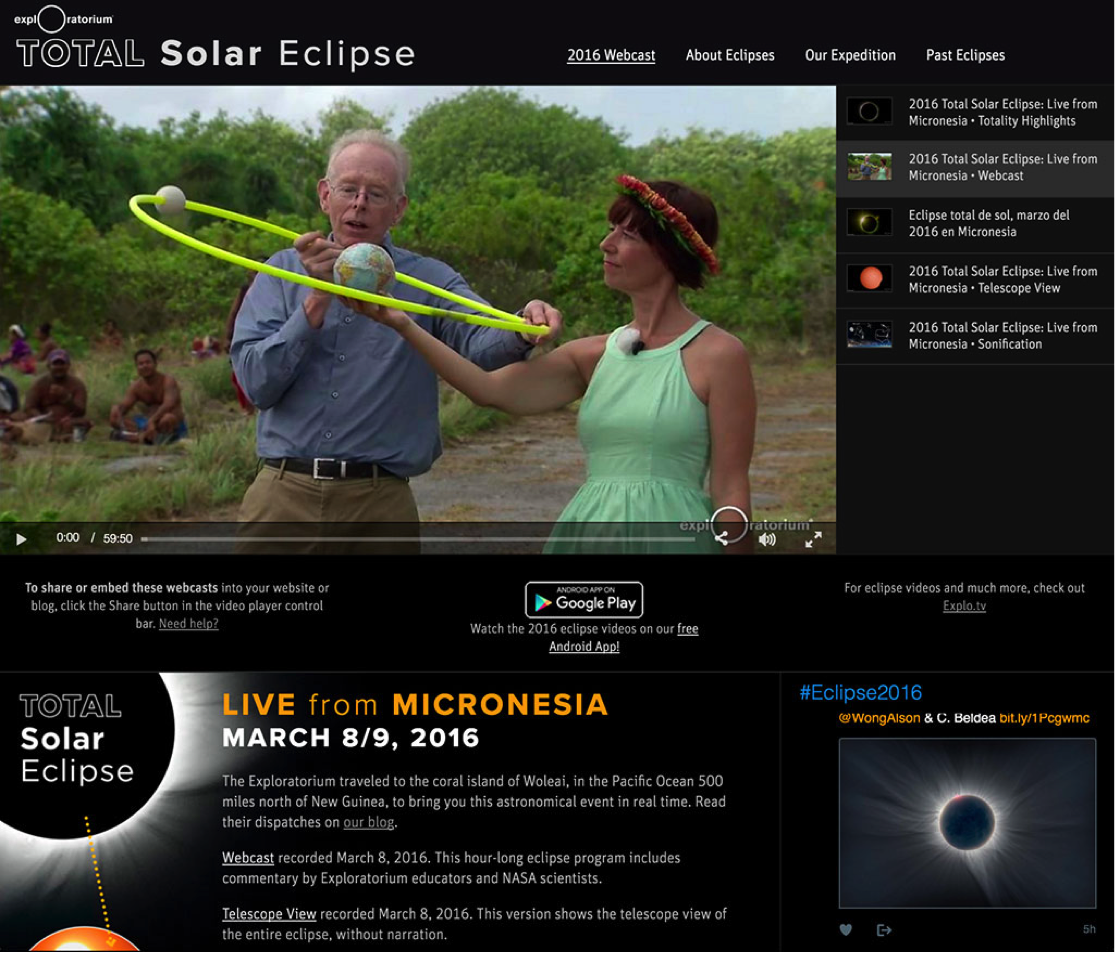 Photo courtesy of the © Exploratorium
Photo courtesy of the © Exploratorium
Brightcove: Tell me a little more about how live events drive awareness for the Exploratorium.
Rob Rothfarb: We have a very active webcasting program, and one of the things that we’ve focused on since 1998 has been expeditions to transmit live images of total solar eclipses from different parts of the world. By helping people to experience natural phenomena like an eclipse, we hope to inspire people’s curiosity so that they can make their own observations and hopefully experience a total solar eclipse in person. We present this as part of our educational mission with support from NASA and in the case of the eclipse this year, also with support from the National Science Foundation.
In addition to the dramatic live views of a total solar eclipse, we create additional educational content to drive awareness by addressing questions like: Why do we see eclipses? How do they work? What are the celestial mechanics involved? And then also diving a little bit into the local cultural aspects of the places that we visit as they experience a total solar eclipse.
Brightcove: How did you promote this eclipse? Through educational partnerships?
Rothfarb: Our website was the primary channel that we used to let people know that we had an expedition going to Micronesia to capture images of the eclipse. We also worked with NASA and news media to make the program available to them. A lot of news media picked it up, like ABC and the L.A. Times as well as astronomy websites and local blogs in San Francisco. We transmitted the program both to the Internet and also made it available via satellite to other partners. Some people picked it up that way, like NASA TV and the Associated Press as well as other news organizations. We also transmitted the live video from Brightcove into the 3D virtual world of Second Life, where we had two different viewing events which brought avatars from all over the world together to watch the eclipse.
We let people embed our live video on their blogs and websites, and many did. We found that actually more people watched the live event on other websites using our stream than on our own website, which was interesting to see.
Brightcove: So when you’re developing a video campaign of this depth and scale, how do you facilitate exposure on different channels?
Rothfarb: We wanted to make sure that the program reached both the general public and specific educational audiences. So we had a multipronged strategy. We used social media and our public website to push it to a general audience. But we also reached out to hundreds of museums and educational partners to let them know that we were making the live stream available for them to create their own educational programming around. That’s pretty key for us—we want to let other educational institutions create their own public programming or online programming using our live feed.
Brightcove: How would you advise others getting started with live broadcasting to make the most of their event?
Rothfarb: I think the key is getting the word out.
We offered to let other websites and bloggers embed the live stream and build their own articles or stories around it. Also, we put out messaging like, “Don’t just watch it on your computer. Create a solar eclipse-viewing event or party in your living room.” “Share the video to your television!” “Use our mobile app to watch it on the go, or share it to other devices for enhanced viewing.” People need to know their options.
Because of the location, this particular eclipse wasn’t a well-covered news story in the West, so it was, in a way, a little bit like the forgotten eclipse. So promotion was essential, but also coordination and logistics. Having a production crew in the field, and setting up backchannel communications is key. We had this all filtering back to the Exploratorium so we could understand what was going on and to coordinate the broadcast. Giving our audience a sense of what’s going on behind the scenes—bringing live images from a telescope on the other side of the globe to their screen, was part of our story as well. We created additional content assets to share some of the details of the live stream on our blog and web page.
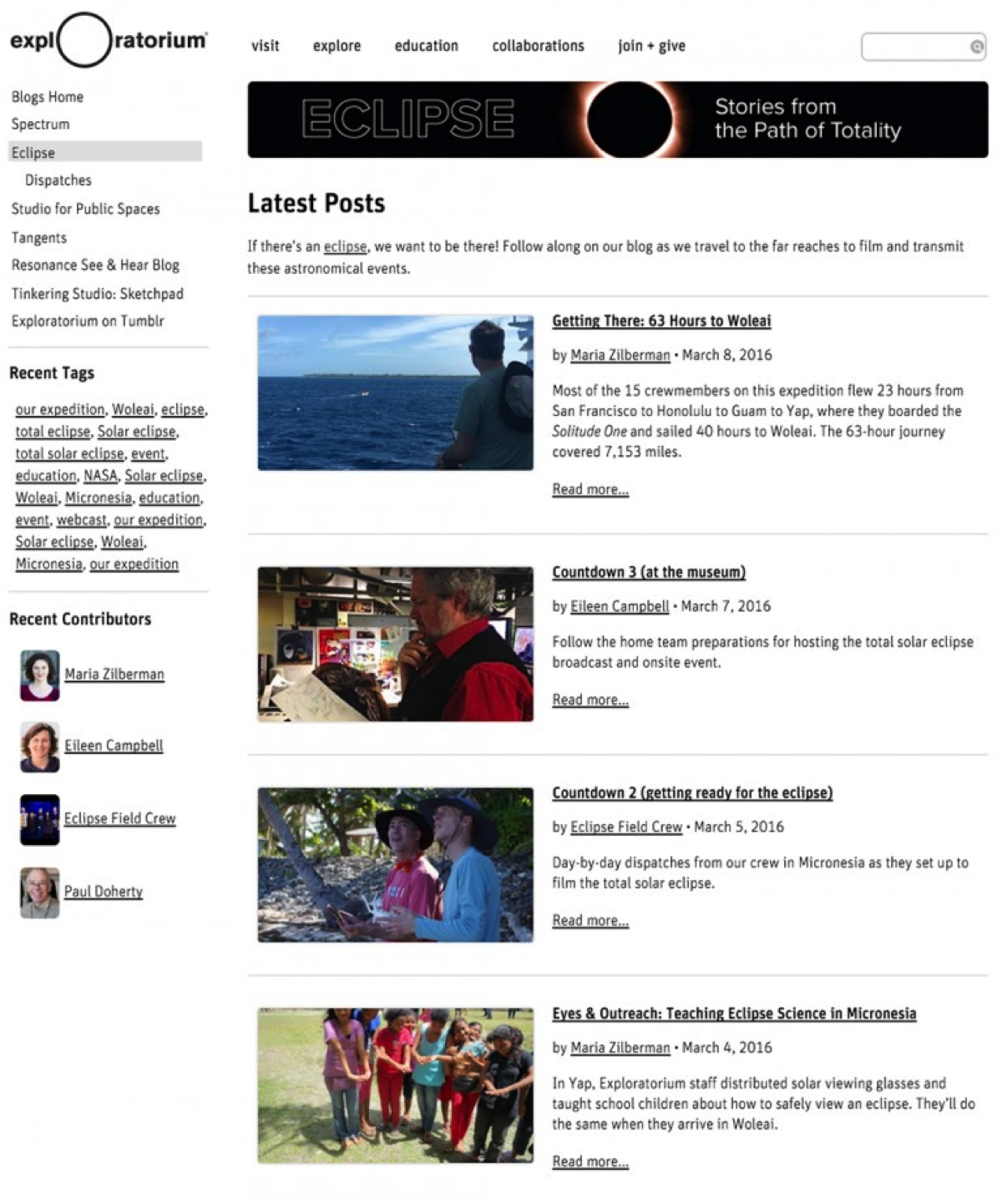 Photo courtesy of the © Exploratorium
Photo courtesy of the © Exploratorium
Brightcove: You had to film on the remote island of Woleai in Micronesia, set up an uplinking feed to a satellite, and then turn that into a web-friendly feed for worldwide consumption. Could you walk us through those technological logistics?
Rothfarb: There are many layers of challenges from communications equipment, telescopes, and the mechanism to translate the optic signal from telescope to video. It was all challenging to set up, but the satellite transmission worked perfectly. For the Internet transmission, we focused a lot on encoding, the format, resolutions, and bitrates we were encoding it in, publishing the streams with customized video players, and then making sure that we tested everything. We had multiple test windows with additional satellite time before the event to rehearse everything. That’s really key.
We worked with Encompass on the encoding and getting the video into the Brightcove cloud via Akamai. We worked with Brightcove to test all of our renditions and used the media API to create the programs that we needed. We also used different Brightcove players and spent a fair amount of time customizing them to our specifications. We delivered live closed captions for our main program and that required setup and testing.
Brightcove: Is this the first time that you’ve partnered with Brightcove for a live stream?
Rothfarb: We’ve been Brightcove customers since 2011, and there has not been a total solar eclipse since 2008—that we broadcast anyway. So this was the first total solar eclipse we broadcast using Brightcove. Total solar eclipses tend to come in pairs, occurring every couple of years. In 2012, we used Brightcove to live broadcast a rare planetary eclipse: the transit of Venus. It passed in front of the sun and we broadcast the entire transit for 6.5 hours. It was amazing and very successful for us.
Brightcove: Now that the live event has ended, how do you continue to utilize or repurpose the live video content?
Rothfarb: Our mobile app has a very extensive on-demand library. So people can watch the full three-hour broadcast from the app as well as on our website and all the other produced educational video pieces that we’ve created for the eclipse. We also have our complete archive of all past eclipse expeditions available. So our app and website are active resources.
Online, there was quite a lot of video viewing activity at the end of March into the middle of April, even though this event occurred March 8th and 9th. People are still discovering the video content and watching it on our website and in our mobile app. It has a pretty good tail. We also featured all of the video programming in our webcast studio at the Exploratorium for about a month and a half after the eclipse event.
We’re utilizing the eclipse of 2016 to get people excited about seeing the next total solar eclipse which will be on August 21st, 2017. The path the shadow of the moon will take in 2017 is directly over the United States—from coast to coast—allowing millions of people to be able to see the eclipse with their own eyes. We’re planning to broadcast it live on our website and mobile app.
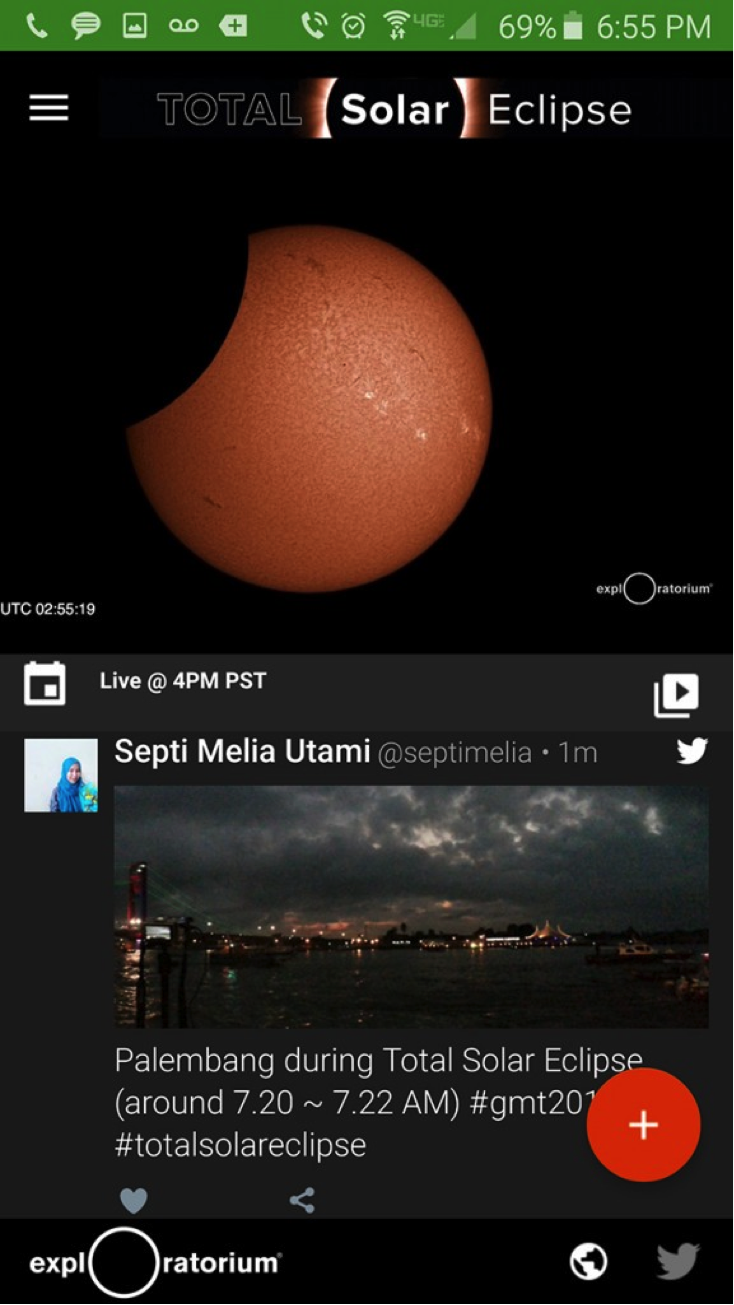 Photo courtesy of the © Exploratorium
Photo courtesy of the © Exploratorium
Brightcove: What have viewers’ reactions been like from an emotional standpoint?
Rothfarb: It’s tremendous. People are very moved by seeing a total eclipse, even through live video.
We’re committed to doing it with the highest quality so that people can really see the drama of the natural phenomenon as it unfolds. To see the corona of the sun and features like the prominences, or the streamers that come off of the sun as well as sun spots… you can see all that in our webcast, it’s very dramatic.
One of the things that we were committed to with this eclipse was helping the people in Micronesia understand the phenomenon. So we did a lot of educational outreach in the schools there with our field team prior to the eclipse. We handed out safe-viewing glasses and helped them to understand why the eclipse was happening. They appreciated learning about it and celebrated it!
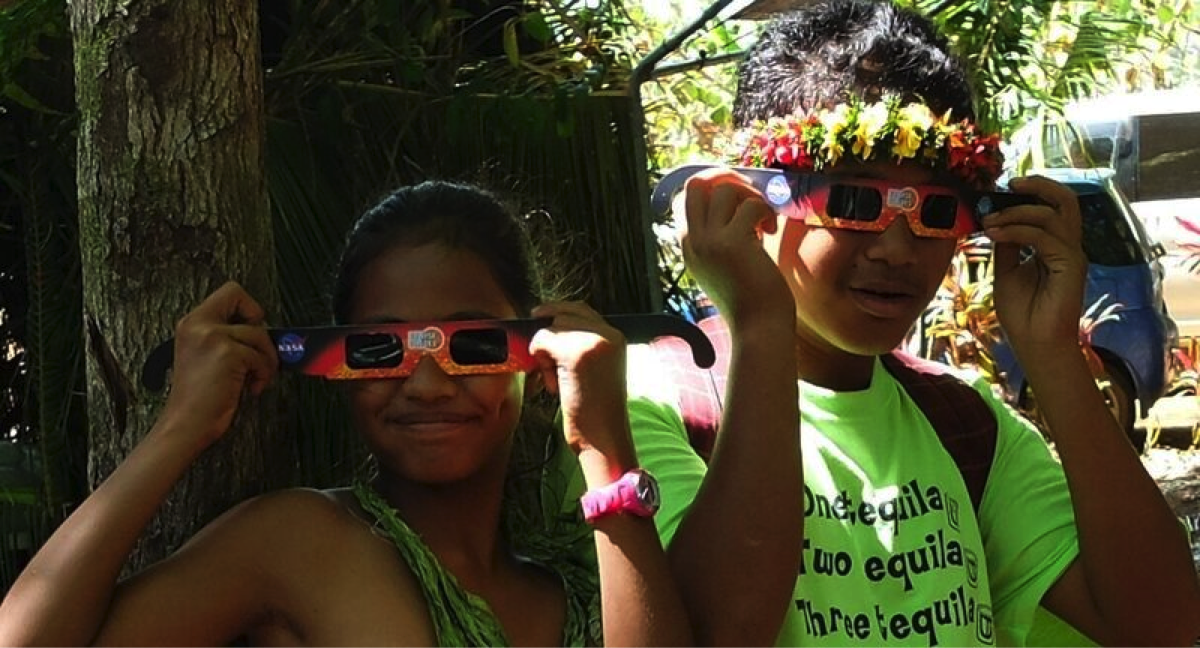 Photo courtesy of the © Exploratorium
Photo courtesy of the © Exploratorium
Brightcove: Technology made this possible, but understanding the effect on real people is always the most interesting part.
Rothfarb: In the museum, we had a program the night of the eclipse, about 900 people watching our live broadcast in the museum at the same time that we were broadcasting it online. People were very emotional, cheering it on, and were very excited to see it unfold.
We did tap into social media to follow the conversation, and you can see some of the emotional reaction to it, especially from people in the area where the eclipse was happening. They were very excited to share their own experiences. It was great to see the conversation about the eclipse unfolding in the Twitter stream which we embedded in our website and app adjacent to the live video. Adding social media to our live stream took the experience even further for our viewers and created a connection with other virtual eclipse watchers.
Technical and Marketing Lessons
This project, from head to tail, is simply remarkable. A remote live event, live streaming of said event across devices and in-app, satellite viewing events, press and community promotion, social interaction and reaction, all with unseen technical elements working seamlessly to deliver a remarkable experience through online video. It’s no wonder that Rothfarb and his team won a Gold GLAMi Award (previously the Best of the Web Awards).
The children of Micronesia aren’t likely to forget their first solar eclipse, but neither are those watching halfway across the world. Even if you don’t have the technical experience of Rob Rothfarb and the Exploratorium team, there are still some takeaways for marketers looking to utilize live streaming for their next big event.
- Integrate in-person and online communities by making your live stream embed widely available.
- Let people peek behind-the-scenes with additional content created in advance leading up to the event.
- Interact and promote your content socially and to online communities (ex. Second Life).
- Extend the life of your event by making the life event video available on-demand.




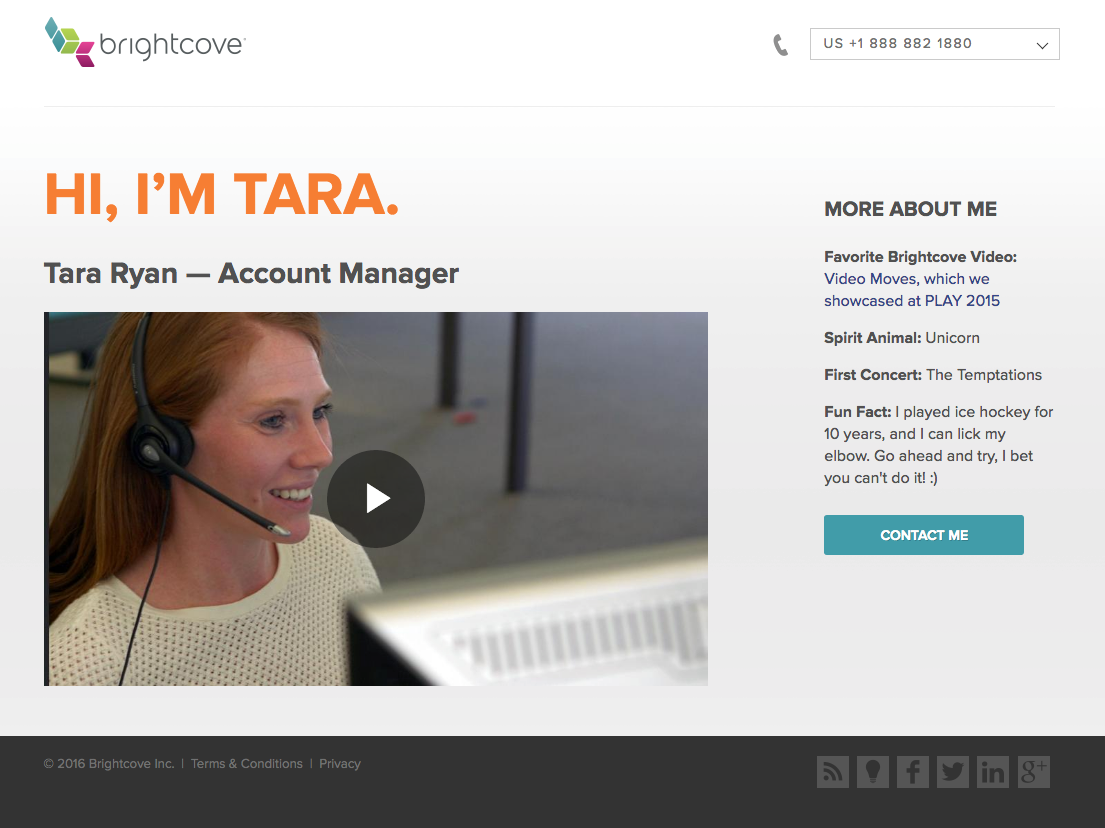
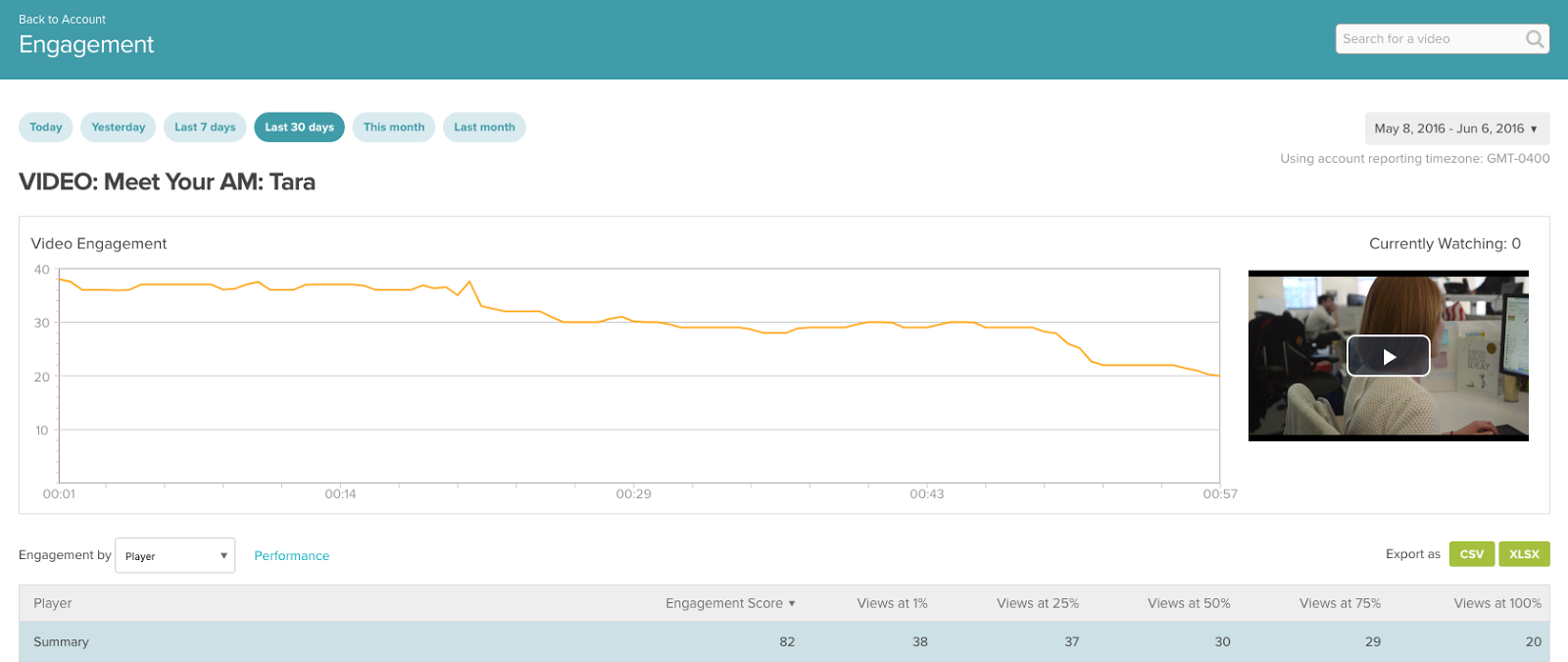


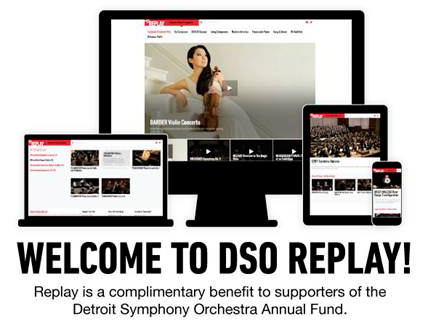
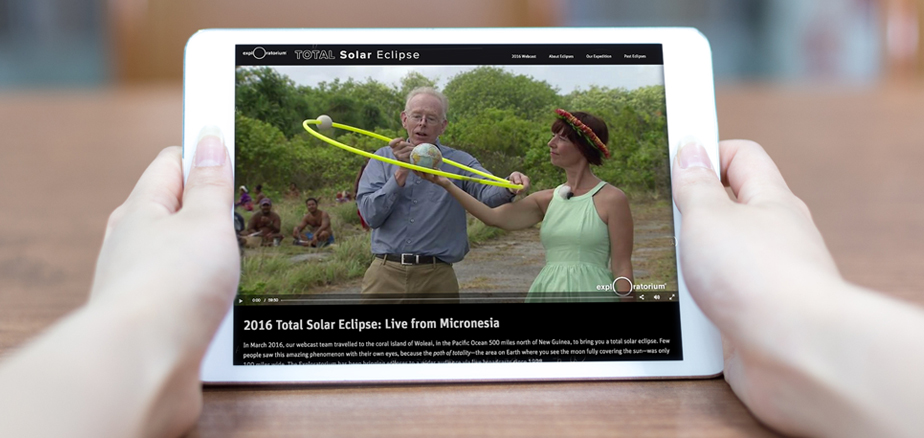
 Photo courtesy of the © Exploratorium
Photo courtesy of the © Exploratorium Photo courtesy of the © Exploratorium
Photo courtesy of the © Exploratorium Photo courtesy of the © Exploratorium
Photo courtesy of the © Exploratorium Photo courtesy of the © Exploratorium
Photo courtesy of the © Exploratorium

